Celestron UpClose G2 20x50 Porro Handleiding
Celestron
Verrekijker
UpClose G2 20x50 Porro
Bekijk gratis de handleiding van Celestron UpClose G2 20x50 Porro (8 pagina’s), behorend tot de categorie Verrekijker. Deze gids werd als nuttig beoordeeld door 50 mensen en kreeg gemiddeld 4.9 sterren uit 25.5 reviews. Heb je een vraag over Celestron UpClose G2 20x50 Porro of wil je andere gebruikers van dit product iets vragen? Stel een vraag
Pagina 1/8

INSTRUCTION MANUAL
PORRO PRISM BINOCULAR
ROOF PRISM BINOCULAR

www.CELESTRON.com
BINOCULARS
Thank you for purchasing Celestron binoculars and we hope
you will have many years of pleasure with them. To maximize your
enjoyment of the binoculars, please read these instructions on
use and care before using them.
1. Adjusting the Interpupillary Distance (IPD) Since the distance between
the eyes (specifically, the distance between the centers of
the pupils) varies among individuals, the two eyepieces of the
binoculars must be correctly aligned (adjusted). This is called
adjusting the interpupillary distance. To adjust this distance,
lift the binoculars up to your eyes (using both hands) and look
through them at an object in the distance. Move the two halves
of the binoculars about the hinge until you see one clear circle
of image through both eyes.
2. Adjusting Focus Since most people have a variance of vision
from their left eye to their right eye, you must adjust the focusing
system. Use the following steps to achieve focus: (1) Close your
right eye and look through the left side of the binoculars with
your left eye at the subject matter. Rotate the center focusing
wheel until the image appears in sharp focus; (2) Close your
left eye and look through the right eyepiece (called the diopter).
Rotate the right eyepiece until the image appears in sharp
focus; (3) Now look through both eyepieces with both eyes
open. Since you’ve already adjusted the right eyepiece, use
only the center focusing wheel to refocus on a new object at a
different distance.
Note: If your binocular has a diopter indicator, please note
the setting for later use for faster focus adjustment.
For Zoom Binocular models – to increase or decrease power, move
the zoom lever. To adjust focus you first zoom the binoculars to
the highest power and then adjust the focusing system as above.
Then, when zooming in and out your binoculars will be in focus.
Hint: Eyeglasses worn for nearsightedness should be worn
when using binoculars as you may not be able to reach a sharp
focus at infinity without them.
3. Set the Rubber Eyecups Leave the Rubber Eyecups up if you
do not wear eyeglasses but fold them down if you do wear
eyeglasses to obtain the maximum field of view. When done
observing, fold the eyecups up for storage.
4. Tripod Adaptability Porro Prism binoculars feature a
built-in tripod adapter fitting. On these models, a threaded screw
hole is underneath a cap. To attach a binocular tripod adapter,
remove the cap and then thread the screw from the binocular
tripod adapter into the threaded screw hole. The other end of
the binocular tripod adapter attaches to a photographic tripod.
Mounting binoculars this way allows for added stability and
comfort especially when viewing at high powers.
ROOF PRISM BINOCULAR
Diopter
Adjustment
Objective Lens
Eyepiece
Focuser
Rubber Eyecup
PORRO PRISM BINOCULAR
Diopter
Adjustment
Objective
Lens
Tripod
Adapter
Thread
Zoom Lever
(for Zoom Models)
Eyepiece
Focuser
Rubber
Eyecup
5. Care and Cleaning Binoculars do not need routine maintenance
other than making sure that the objective lenses and eyepieces
are kept clean. If repairs become necessary, they should be serviced
by the manufacturer or a qualified binocular repair company.
Collimation (optical alignment) is the biggest concern with
binoculars. If your binoculars are roughly handled or dropped,
there is a good chance that the collimation will be out and
they should be serviced. Dirty objectives and/or eyepieces
mean less light transmission and loss of brightness as well as
unsharp images. Keep your optics clean ! When not using your
binoculars store them in the case provided. Avoid touching
the glass surfaces but if fingerprints (which contain mild acid)
get on them, they should be cleaned as soon as possible to
avoid damaging the coatings. To clean the optical surfaces, we
recommend a lens/optics cleaning kit available at most photo
or optical shops and follow the instructions provided closely. If
you have a lot of dust or dirt accumulated, brush it off gently
with a camel’s hair brush and/or utilize a can of pressurized
air before using the cleaning kit. Alternately, you could use the
Celestron LensPen (# 93575) made especially for cleaning
binoculars. Never attempt to clean your binoculars internally or
try to take them apart!
6. Caution! Viewing the sun may cause permanent eye damage.
Do not view the sun with your binoculars or with the naked eye.
7. Problems or Repair If warranty problems arise or repairs are
IPD Scale
IPD
Porro Binocular
Roof Binocular

www.CELESTRON.com
necessary, contact the Celestron technical support department
if you live in the U.S.A. or Canada. If you live elsewhere, please
contact the Celestron dealer you purchased the binoculars
from or the Celestron distributor in your country (listings on the
Celestron website).
8. Warranty Your binocular has the Limited Lifetime Warranty
for U.S.A. and Canadian customers. For complete details of
eligibility and for warranty information on customers in other
countries visit the Celestron website: www.celestron.com
This product is designed and intended for use by those 14
years of age and older. Product design and specifications are
subject to change without prior notification.
JUMELLES
Nous vous remercions d’avoir fait l’acquisition de jumelles
Celestron et nous espérons qu’elles vous procureront des
années de satisfaction. Pour utiliser vos jumelles au mieux,
veuillez préalablement lire ce mode d’emploi et ces consignes
d’entretien.
1. Réglage de la distance interpupillaire (DIP) Étant donné que la
distance entre les yeux (plus précisément, la distance entre le
centre des deux pupilles) varie d’une personne à l’autre, il est
nécessaire de parfaitement aligner (régler) les deux oculaires
des jumelles. Cette distance est désignée sous le nom de dis-
tance interpupillaire. Pour la régler, mettez les jumelles devant
vos yeux (en les tenant des deux mains) et regardez un objet
éloigné avec. Déplacez les deux tubes droits des jumelles au
niveau de la charnière jusqu’à ce que vous aperceviez un cercle
d’image net avec les deux yeux.
2. Réglage de la mise au point Étant donné que la plupart des gens
n’ont pas la même vision d’un oeil à l’autre, vous devez régler
le système de mise au point. Procédez comme suit pour
effectuer la mise au point : (1) Fermez l’oeil droit et regardez
l’image observée avec l’oeil gauche à travers le tube gauche
des jumelles. Tournez la molette centrale de mise au point
jusqu’à ce que l’image soit parfaitement nette ; (2) Fermez
l’oeil gauche et regardez maintenant dans l’oculaire droit (pour
le réglage de la dioptrie). Tournez l’oculaire droit jusqu’à ce
que l’image soit parfaitement nette ; (3) Regardez maintenant
dans les deux oculaires avec les deux yeux. L’oculaire droit
venant d’être réglé, utilisez uniquement la molette centrale de
mise au point pour refaire la mise au point sur un nouvel objet
situé à une distance différente.
Remarque : Si vos jumelles sont dotées d’un indicateur de
dioptrie, veuillez noter le réglage pour effectuer plus rapide-
ment votre mise au point lors de toute utilisation ultérieure.
Pour les modèles de jumelles avec zoom – déplacez le levier du zoom
pour augmenter ou diminuer la puissance. Pour régler la
mise au point, réglez déjà les jumelles au grossissement
maximum, puis ajustez le dispositif de mise au point comme
indiqué ci-dessus.
Ensuite, vous pourrez effectuer des zooms avant et arrière en
obtenant une image nette.
Conseil utile : Si vous êtes myope, vous devez mettre vos lunettes
lorsque vous utilisez les jumelles, sinon vous risquez de ne
pouvoir parvenir à une mise au point nette à l’infini.
3. Installation des oeilletons en caoutchouc Laissez les oeilletons
en caoutchouc en position relevée si vous ne portez pas de
lunettes, mais abaissez-les dans le cas contraire pour obtenir
un champ de vision maximum. Lorsque vous avez fini, repliez les
oeilletons avant de ranger vos jumelles.
4. Adaptabilité du trépied Jumelles à prisme de Porro sont équipées
d’un adaptateur intégré pour trépied. Ces modèles sont pourvus
d’un orifice à vis fileté situé sous un cache. Pour fixer un adaptateur
de trépied pour jumelles, retirez le cache et vissez la vis de
l’adaptateur du trépied pour jumelles dans l’orifice fileté. L’autre
extrémité de l’adaptateur du trépied pour jumelles se fixe sur un
trépied photographique. En montant les jumelles de cette façon,
on bénéficie d’une stabilité et d’un confort meilleurs, notamment
pour observer avec des grossissements élevés.
JUMELLES À PRISME EN TOIT
Réglage de la
Oculaire
dioptrie
Objectif
Oculaire
Dispositif de
mise au point
Œilleton
caoutchouc
JUMELLES À PRISME DE PORRO
Réglage
de la
dioptrie
Objectif
Filetage de
l’adaptateur de
trépied
Levier du zoom
(pour modèles
avec zoom)
Oculaire
Dispositif de
mise au point
Œilleton
caoutchouc
5. Entretien et nettoyage Le seul entretien préconisé pour les
jumelles consiste à vérifier la parfaite propreté des lentilles et
des oculaires. Si des réparations sont nécessaires, elles devront
être confiées au fabricant ou à une entreprise spécialisée dans la
réparation de jumelles. La collimation (alignement optique) est le
plus gros problème que l’on rencontre avec les jumelles. En cas
de maniement brutal ou de chute des jumelles, la collimation
Ichelle de Distance Interpupillaire
Ichelle de Distance
Interpupillaire
Jumelles de Porro
Jumelles de en toit
Product specificaties
| Merk: | Celestron |
| Categorie: | Verrekijker |
| Model: | UpClose G2 20x50 Porro |
| Kleur van het product: | Zwart |
| Gewicht: | 794 g |
| Breedte: | 81 mm |
| Diepte: | 185 mm |
| Hoogte: | 160 mm |
| Prisma type: | BK-7 |
| Vergroting: | 20 x |
| Exit pupil: | 2.5 mm |
| Oogafstand: | 7 mm |
| Blijkbare gezichtsveld: | 3.2 ° |
Heb je hulp nodig?
Als je hulp nodig hebt met Celestron UpClose G2 20x50 Porro stel dan hieronder een vraag en andere gebruikers zullen je antwoorden
Handleiding Verrekijker Celestron
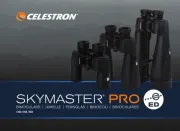
11 Mei 2025
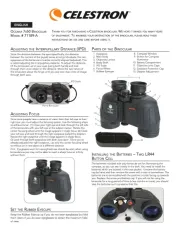
11 Mei 2025

31 Maart 2025
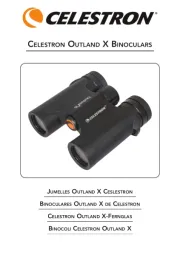
31 Maart 2025
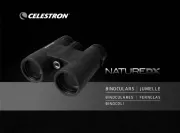
31 Maart 2025

25 Juni 2023

20 Mei 2023

19 Mei 2023

6 Mei 2023

5 Mei 2023
Handleiding Verrekijker
- Hawke
- Umarex
- Maginon
- Carson
- Technaxx
- IGEN
- Guide
- InfiRay
- Tevion
- EVOLVEO
- Leica
- Traveler
- Rollei
- Swarovski
- RIX
Nieuwste handleidingen voor Verrekijker
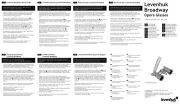
11 September 2025
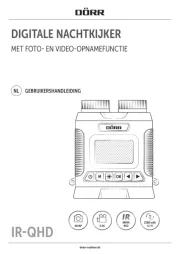
1 September 2025
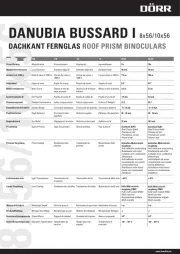
25 Augustus 2025
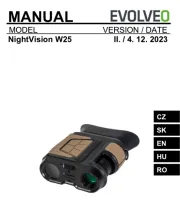
15 Augustus 2025

5 Augustus 2025

22 Juli 2025

22 Juli 2025
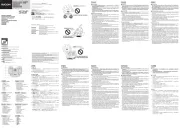
21 Juli 2025

21 Juli 2025
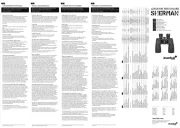
21 Juli 2025